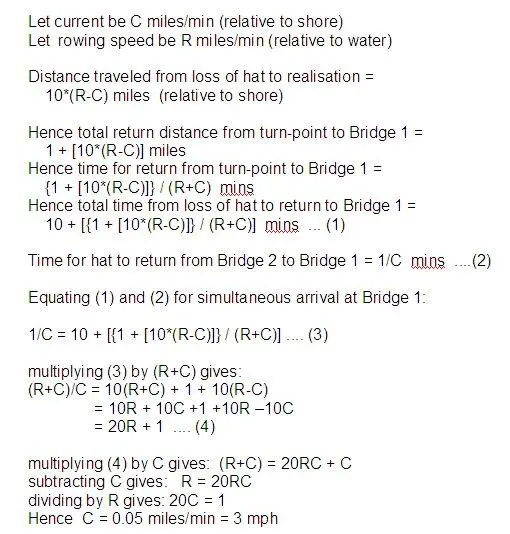Does it?Funny how the problem seems so much simpler when the river and bridges are replaced with an aeroplane and 2 landmarks.As I said, as far as I am concerned, the concept is essentially the same with any 'moving substrate' - I think I mentioned rivers, conveyor belts, escaltors and trains - but we can, indeed, add air (and plenty of other things) to that list as well
However, the principle is the same for all of them.
Kind Regards, John
It is of course, but until one realises that [the moving substrate], it's not easy to think of the river water as the substrate against which the man is rowing rather than the land with the bridges.


